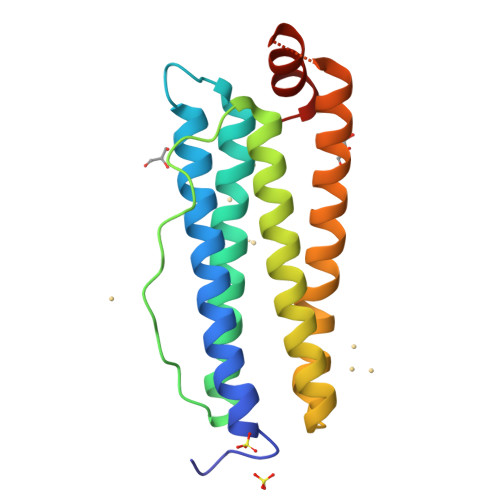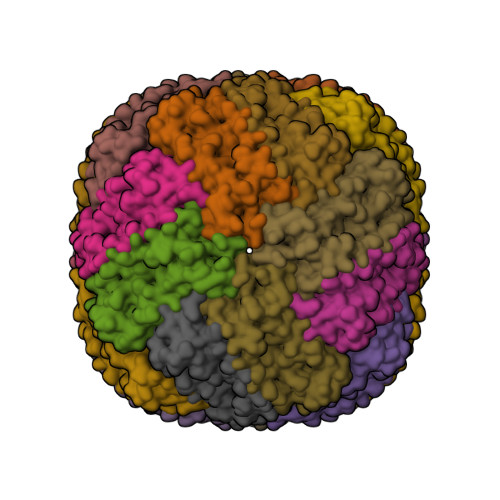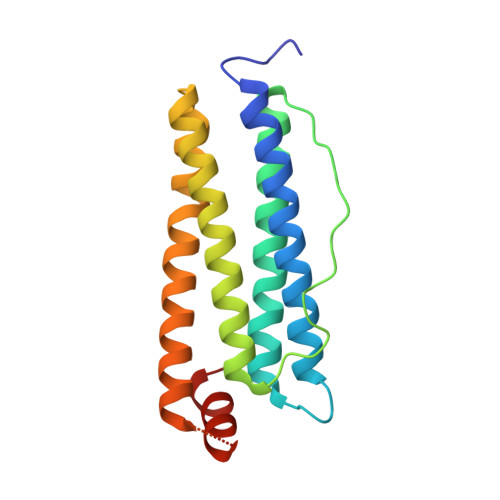Structural description of the active sites of mouse L-chain ferritin at 1.2A resolution
Granier, T., Langlois D'Estaintot, B., Gallois, B., Chevalier, J.-M., Precigoux, G., Santambrogio, P., Arosio, P.(2003) J Biol Inorg Chem 8: 105-111
- PubMed: 12459904
- DOI: https://doi.org/10.1007/s00775-002-0389-4
- Primary Citation of Related Structures:
1LB3 - PubMed Abstract:
The first ferritin structure refined at the atomic level has been achieved on recombinant mouse L-chain apoferritin (rMoLF) crystals. These latter diffract to 1.2 A resolution under cryogenic conditions. When cryo-cooling the sample, the thermal disorder usually observed at room temperature is reduced and the low-temperature structure reveals several details concerning the protein putative active sites and their properties. Within the pores built up by the molecular three-fold symmetry axes, the iron entry route to the ferritin cavity, residues H118, D131 and E134, exhibit alternate conformations associated with the binding of partially hydrated cadmium ions, a metal used as a crystallization agent. At the mineral ferrihydrite nucleation center, the electron density maps evidence the orientation of E57, E60, E61 and E64 glutamate side chains (whereas they were observed highly disordered in previous ferritin structures determined at room temperature) and allow a description of the site taking into account the binding geometry of four Cd(2+) ions. Moreover, the side chain of residue K140, lying in the vicinity of the ferrihydrite nucleation center, is shown to interact with residue E61. As previously highlighted, this observation confirms the importance of K140 in the rMoLF sequence, as being responsible for the low level of iron incorporation by mousel L-chain ferritin compared to human L-chain ferritin. Finally, the diffusion of small molecules within the ferritin cavity is illustrated here by the presence of ordered molecules of glycerol used as a cryo-protectant, which bind the inner cavity surface of the protein.
Organizational Affiliation:
Unité de Biophysique Structurale, UMR CNRS 5471, Université Bordeaux I, Bât B8, avenue des Facultés, 33405 Talence Cedex, France. t.granier@ubs.u-bordeaux.fr





















